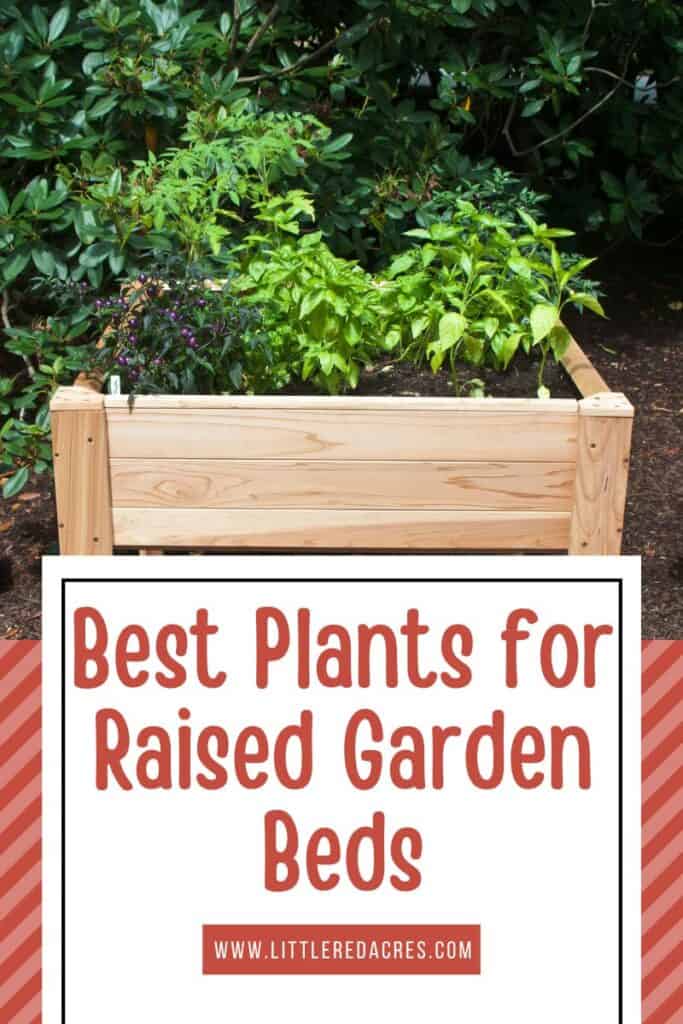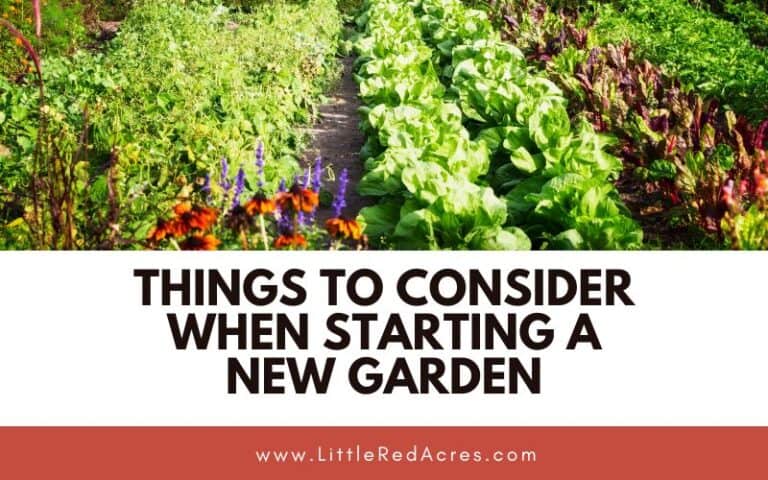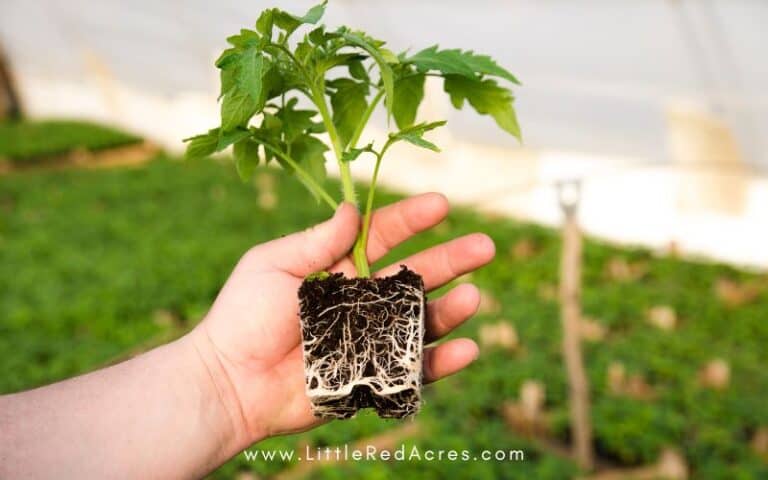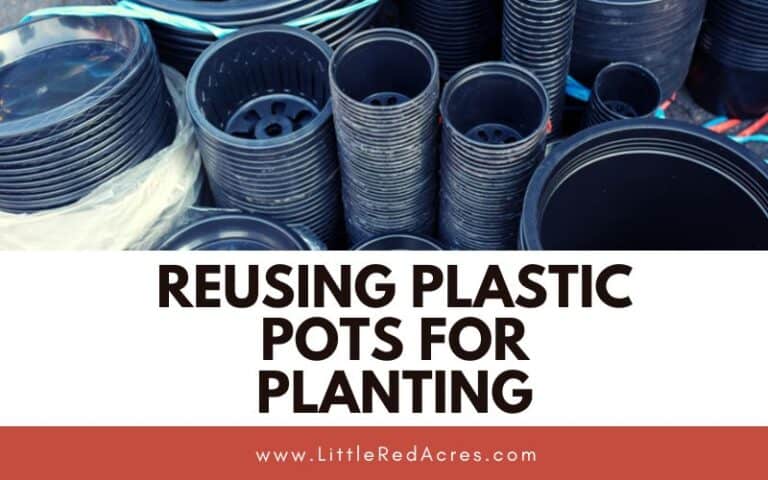Best Plants for Raised Garden Beds
Inside: Transform your garden with raised beds! Discover 10 veggies, from tomatoes to peppers, and expert care tips.
Are you thinking about starting raised garden beds? One of the many benefits of a raised bed garden is that it allows you to grow vegetables in a small space. With the right soil, drainage, and sunlight, you can grow a variety of vegetables in a raised bed garden.

This post may contain affiliate links, see my disclosure policy for more information.
Best Plants for Raised Garden Beds
When planting in a raised bed garden, it’s important to prepare the soil by adding compost and other organic matter. This will help improve the soil structure and provide nutrients for the plants. It’s also important to make sure the soil is well-draining to prevent water from pooling and causing root rot.
Get updates & freebies delivered to your inbox!
One of the best things about raised garden beds is that I'm not killing my back to take care of my garden! Seriously though, not having to bend over to the ground is 100% worth investing in either buying or making your own raised beds.
Another great thing about raised beds is that you have complete control over the soil. We have very rocky soil here in Nova Scotia Canada and while a lot of things can be grown in it, it is terrible for root vegetables.
I don't want to spend years and every penny I have to deal with the rocks and fixing the soil when I can get it right from day one in raised beds. I want to be able to grow carrots this year.
Soil for Raised Garden Beds
When caring for plants in a raised garden bed, it’s important to keep the soil moist but not waterlogged. It’s also important to fertilize regularly to provide nutrients for the plants.
Finally, it’s important to keep an eye out for pests and diseases, as they can quickly spread in a small space like a raised bed garden.
Plants for Raised Garden Beds
Lettuce & Spinach
Lettuce is a cool-season crop that grows well in raised bed gardens. It’s important to keep the soil moist and cool, which is easier to do in a raised bed garden. Lettuce also benefits from partial shade, which can be achieved by planting it next to taller plants.
Radishes
Radishes are a fast-growing crop that can be planted early in the season. They grow best in loose, well-draining soil, which is easy to achieve in a raised bed garden.
Carrots
Carrots are a root vegetable that grows well in a raised bed garden. They require loose, well-draining soil, which can be easier to achieve in a raised bed garden where you have total control over the soil.

Herbs
Many herbs grow well in raised bed gardens, including basil, cilantro, parsley, and thyme. Herbs require well-draining soil and consistent moisture.
Plants that Need Support
There are some plants that benefit from the support of a trellis or cage to keep the plants upright as they grow. They can grow without the support of one but you will yield more produce with a trellis, as well as have a neater garden area. This is something to consider when planting your raised garden beds.
Tomatoes
Tomatoes are one of the most popular vegetables to grow in a raised bed. They require full sun and well-draining soil, which makes a raised bed garden a great option.
Tomatoes also need the support of a trellis or cage to keep the plants upright as they grow. This is an important step that you do not want to skip.
Peppers
Peppers are a warm-season crop that requires full sun and well-draining soil.

Cucumbers
Cucumbers are a vining plant that requires full sun and well-draining soil.
Squash
Squash is a warm-season crop that requires full sun and well-draining soil.
Green Beans
Green beans are a bush or pole bean that requires full sun and well-draining soil.
A raised bed garden is a great option for growing vegetables in a small space. By choosing the right vegetables and following these tips for planting and caring for them, you can have a successful and productive raised bed garden.
Frequently Asked Questions
What do you put in the bottom of a raised garden bed? Adding a layer of absorbent materials like shredded newspaper and cardboard to your bed will help retain moisture in the soil. A good blend of compost and a layer of mulch on top of your bed will also help reduce the rate of evaporation.
How deep should a raised garden bed be? They should have at least 8 inches of soil depth to accommodate plants' root systems because most plant roots require 6 – 8 inches of soil for healthy root growth.
What are the disadvantages of raised garden beds? Initial construction of the raised bed may take more effort than maintenance of the conventional garden. Depending on the height and volume of the raised beds this can quickly increase costs and may not be suitable to overwintering crops.

Want More?
Reasons to Not Use Scraps to Regrow Veggies






